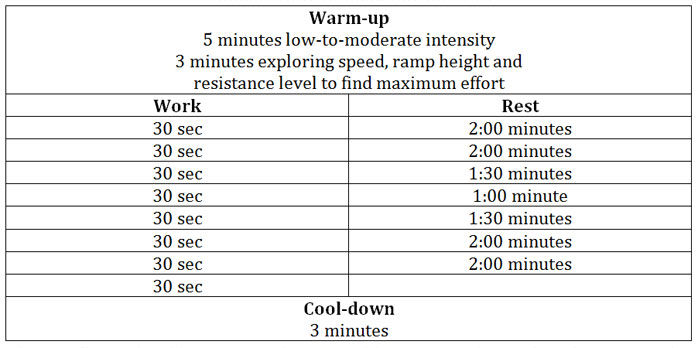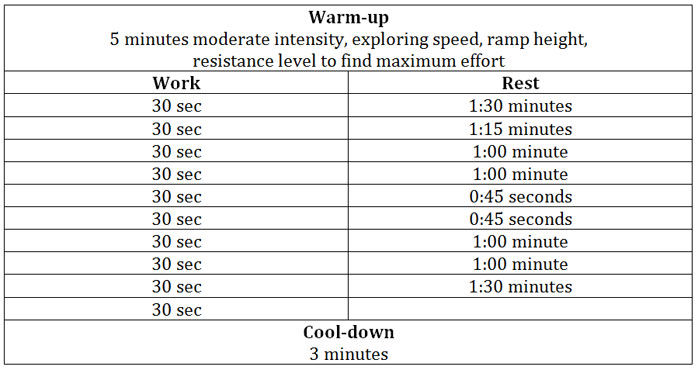When most people think of cardio, they think of long, boring jogs on the treadmill, or endless pedaling on the upright bike. But lately, the buzz in cardio training is high-intensity interval training (HIIT), which alternates between very high-intensity bouts of exercise with either a low-intensity bout of exercise or complete rest. This training style is a departure from the 30 to 60 minutes of continuous steady-state cardio that most people do on cardio machines.
HIIT workouts take less time than traditional cardio workouts and provide the same, if not greater, results. Benefits of HIIT workouts include:
-Raising your metabolic rate so you can burn more calories during exercise and at rest
-Increased aerobic and anaerobic pathways, which helps you utilize and intake more oxygen during steady state training and helps you sustain anaerobic activity for longer periods of time
-Ability to break through training plateaus
-Greater EPOC (excess post-exercise oxygen consumption), which translates into higher and longer calorie burning after exercise has stopped
HIIT can be done on any cardio machine that allows you to vary your speed or resistance. While treadmills make it possible to increase speed and incline, and bikes allow you to increase speed and resistance, the elliptical trainer has additional features that allow you to increase speed, ramp height and resistance. You may even be able to add an upper-body challenge if you have access to an elliptical trainer with arm handles. If you can complete at least 30 minutes of low to moderate cardiovascular activity on any one of the cardio machines, then you are ready to HIIT this workout, elliptical style.
Warm-up:
The first five minutes on the elliptical trainer should focus on getting the body ready to do the workout. Spend five minutes pedaling at a low-to-moderate pace to increase body temperature and prepare the body for more intense work. Then spend three minutes playing around with increasing the machine’s resistance level, ramp height, speed, or possibly a combination of these settings to find your true maximum effort.
Workout:
The workout consists of alternating bouts of high and low intensities for the suggested time. The short, intense work phase should be the maximum level at which you can push yourself. During the longer, low-intensity recovery phase, reduce the resistance, ramp height and speed to a pace that enables you to catch your breath.
Workout #1: Beginner HIIT
Time: 23 minutes

As your fitness level improves and you are able to recover faster than the suggested time, reduce the time that you spend in the recovery phase.
Workout #2: Intermediate HIIT
Time: 20 minutes

Cool-down:
Reduce the speed, ramp height and resistance level slightly lower than your low intensity settings. Focus on decreasing your heart rate and slowing down your breath before exiting the machine.




 by
by 








 by
by